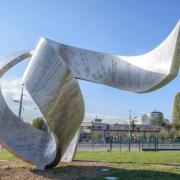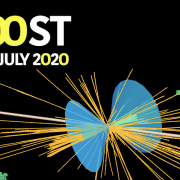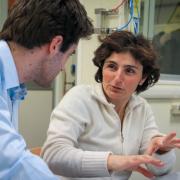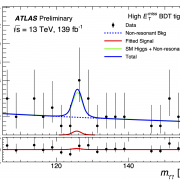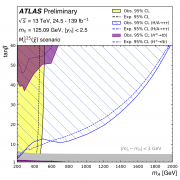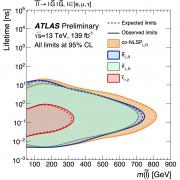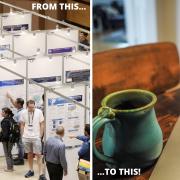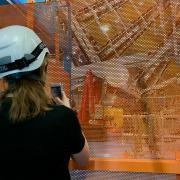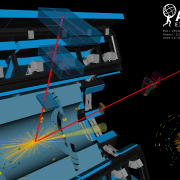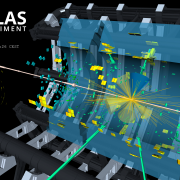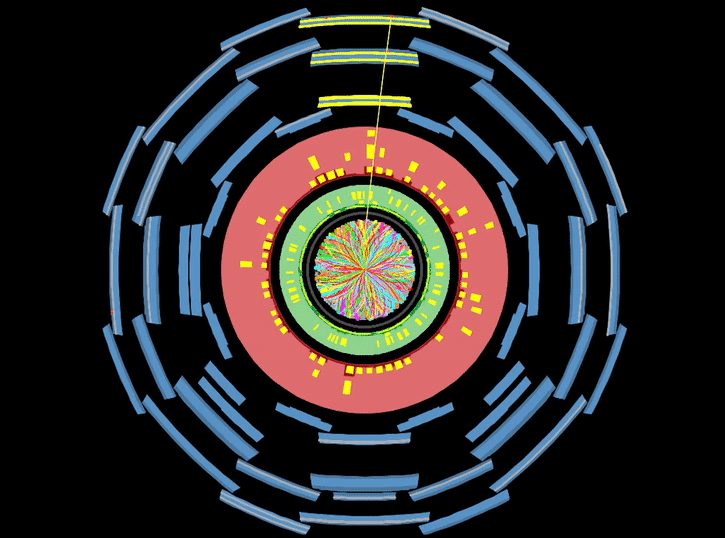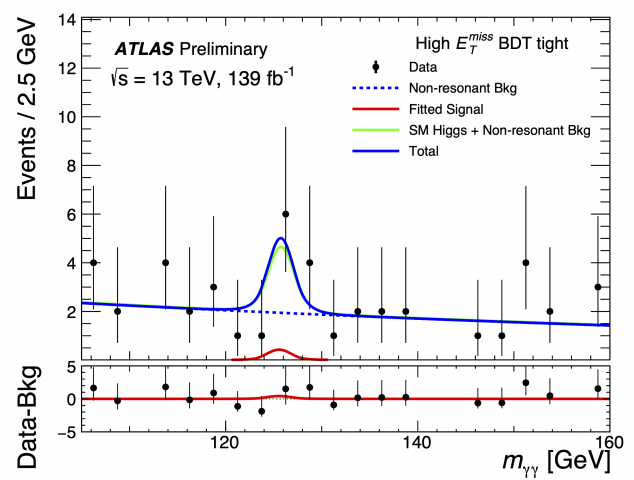Access to Collaboration Site and Physics Results

Why should there be only one? Searching for additional Higgs Bosons beyond the Standard Model
– Since the discovery of the elusive Higgs boson in 2012, researchers have been looking beyond the Standard Model to answer many outstanding questions. An attractive extension to the Standard Model is Supersymmetry (SUSY), which introduces a plethora of new particles, some of which may be candidates for Dark Matter.Read more →

New ATLAS measurement of the Higgs Boson mass
– The ATLAS collaboration has released a new preliminary measurement of the Higgs boson mass using 2015 and 2016 LHC data. The number of recorded Higgs boson events has more than tripled since the first measurement of the Higgs boson was released, using 2011/2012 data. An improved precision in the measurement of the Higgs boson mass has been made possible by both the increased collision energy of 13 TeV and improved collision rate.Read more →
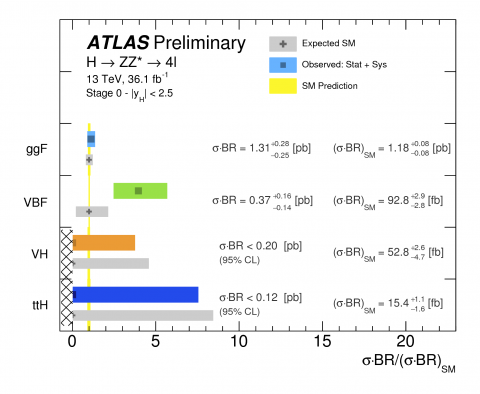
ATLAS takes a closer look at the Higgs boson’s couplings to other bosons
– Since resuming operation for Run 2, the LHC has been producing about 20,000 Higgs bosons per day in its 13 TeV proton–proton collisions. At the end of 2015, the data collected by the ATLAS and CMS collaborations were already enough to re-observe the Higgs boson at the new collision energy. Now, having recorded more than 36,000 trillion collisions between 2015 and 2016, ATLAS can perform ever more precise measurements of the properties of the Higgs bosonRead more →

Chasing the invisible
– Cosmological and astrophysical observations based on gravitational interactions indicate that the matter described by the Standard Model of particle physics constitutes only a small fraction of the entire known Universe. These observations infer the existence of Dark Matter, which, if of particle nature, would have to be beyond the Standard Model.Read more →
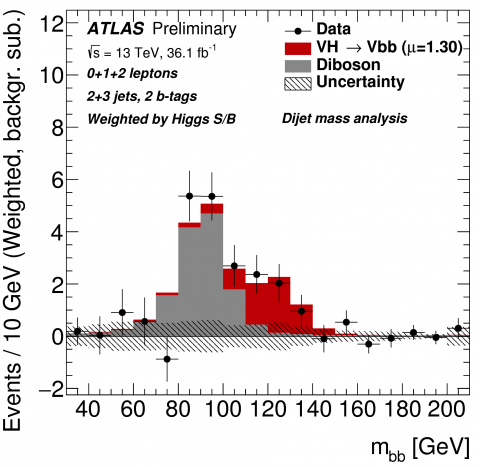
A first LHC sighting of the Higgs boson in its favourite decay
– Until now, the Higgs boson had been observed decaying to photons, tau-leptons, and W and Z bosons. However, these impressive achievements represent only 30% of the Higgs boson decays! The Higgs boson’s favoured decay to a pair of b-quarks, which was predicted to happen around 58% of the time and thus drives the short lifetime of the Higgs boson, had so far remained elusive. Observing this decay would fill in one of the big missing pieces of our knowledge of the Higgs sector. It would confirm that the Higgs mechanism is responsible for the masses of quarks and might also provide hints of new physics beyond our current theories. All in all, it is a vital missing piece of the Higgs boson puzzle!Read more →
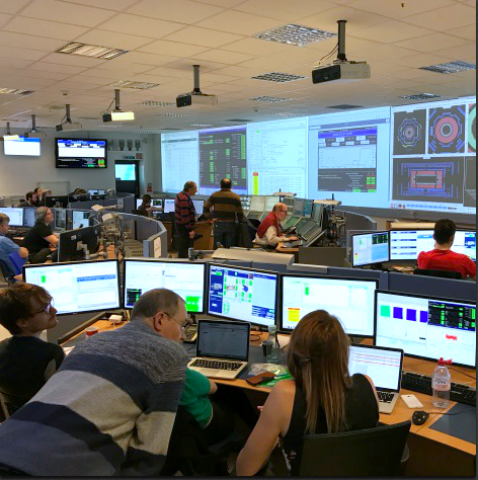
How to run a particle detector
– If you are interested in particle physics, you probably hear a lot about the huge amount of data that is recorded by experiments like ATLAS. But where does this data come from? Roughly speaking: first you have to plan, build and maintain an experiment and in the end you need people to analyse the data you’ve recorded. But what happens in between? What happens in the day-to-day life of people in the ATLAS control room, who are responsible for keeping all that great data coming?Read more →

Hunt for Dark Matter in the “Phantom of the Universe”
– From the chaotic moments after the Big Bang to present day proton collisions in the ATLAS Experiment, the new planetarium show Phantom of the Universe takes viewers on the hunt for dark matter. The show has been awarded an honourable mention for outstanding and innovative production at the 11th International FullDome Festival in Germany.Read more →
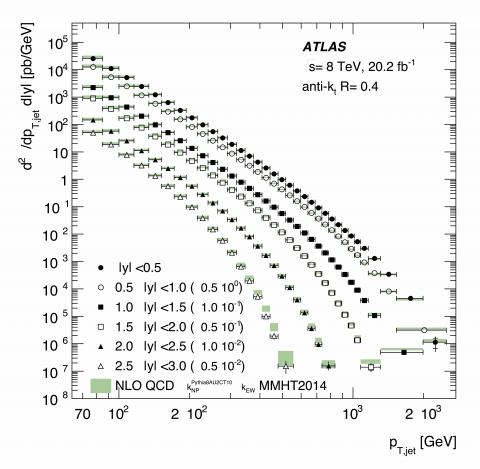
More than the sum of its parts: inside the proton
– Discovered almost 100 years ago by Ernest Rutherford, the proton was one of the first particles to be studied in depth. Yet there’s still much about it that remains a mystery. Where does its mass and spin come from? What is it made of? To answer these questions, ATLAS physicists are using “jets” of particles emitted by the LHC as a magnifying glass to examine the inner structure of the proton.Read more →
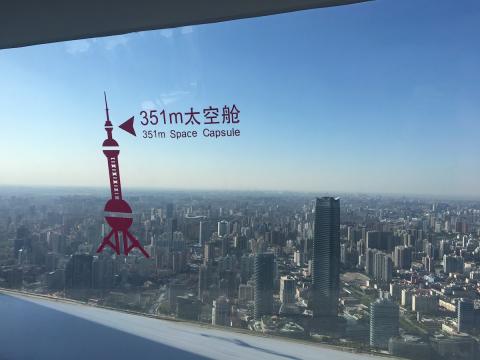
Something old, something new: perspective of LHCP2017
– More than 400 physicists from around the world visiting Shanghai to hear the latest LHC results, at the fifth annual Large Hadron Collider Physics (LHCP17) conference. It was a wonderful opportunity for Chinese particle physicists and students, who do not often have the chance to travel abroad! Even for me, although I have been working on the LHC for almost 10 years, this was still my first time attending such a high-level conference to hear the first-rate physics results from all four experiments at the Large Hadron Collider.Read more →
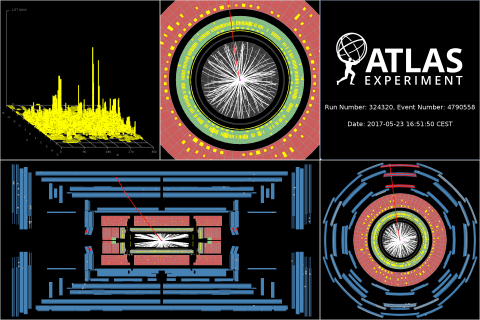
ATLAS kicks off a new year at 13 TeV
– Geneva, 23 May 2017. A new season of record-breaking kicked off today, as the ATLAS experiment began recording first data for physics of 2017. This will be the LHC’s third year colliding beams at an energy of 13 tera electron volts (TeV), allowing the ATLAS Experiment to continue to push the limits of physics.Read more →


